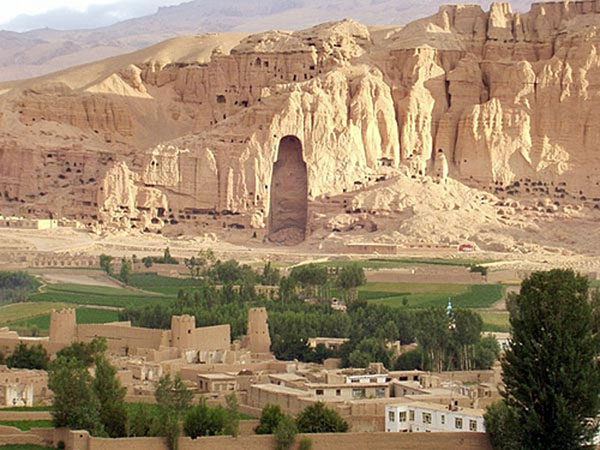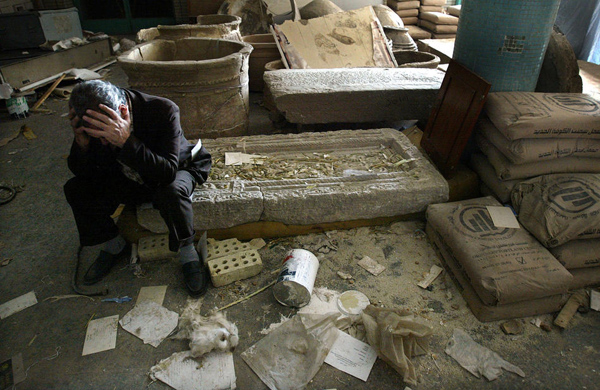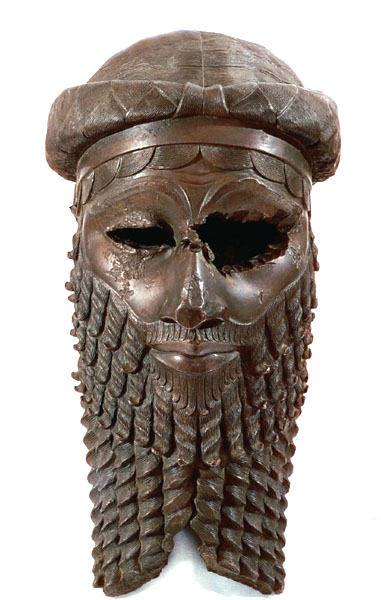
|
Lorna Mills and Sally McKay
Digital Media Tree this blog's archive OVVLvverk Lorna Mills: Artworks / Persona Volare / contact Sally McKay: GIFS / cv and contact |
View current page
...more recent posts
|
"may owls nest in your attic"
If I had the magic to insure that one human-made thing would last forever this might be it.
We saw this object in the ROM exhibition about Mesopatamia. There were a lot of other cuneiform clay tablets as well. This one is relatively recent, although the story itself predates this object. The first instances of cuneiform are from Sumeria. Those people were the first humans we know about to keep written records. Like many written languages, cuneiform started as pictograms and evolved into more abstract symbols. The little marks were made with the ends of reeds, which grew abundantly along the Tigris and Euphrates. Luckily, there was a lot of clay around too. This tablet was made by Assyrians, who followed the Sumerians as the predominant culture in the Fertile Crescent. The Epic of Gilgamesh is a pretty great story, an epic bro-mance, with lots of really erotic side-kick loyalty action and mythic monster-killing by physically fit young men. There's one section about an epic flood. One guy gets tipped off by the gods and builds a huge boat for his family and a bunch of animals. Once the rains stops, they send out a dove, but it comes back. Later they send out a swallow, and it comes back too. Eventually they send out a raven which doesn't return, so they figure it found some land. Sound familiar? Floods were a big deal in Mesopotamia. The story also has some great curses. Gilgamesh is devastated when his BFF dies, and in an irrational fit he blames Shamat, the priestess of Ishtar. He says some truly awful things that he later takes back. Here is a snippet, from Stephen Mitchell's 21st century translation: …may your roof keep leaking and no carpenter fix it, Same parts of the curse, translated a bit more rigorously by Andrew George in 1999.
Not all cuneiform is narrative. A lot of it is record keeping, or reports on battles, or, just, whatever it was that people need to write down. I think it's all gorgeous. |
|
Look at this gorgeous website! It's the Virtual Museum of Iraq. |
|
Of interest: Playing cards distributed to US troops raising awareness about what to do when encountering archaeological sites and artifacts. A quote from news release:
|
|
Speaking of iconoclasm, here's a very sad example.
And here is an interesting book review from The Guardian that provides some nuanced background to the story.
For some reason, my mind keeps pairing the lost Bamiyan Buddhas, with this statue of Marcus Aurelius (and his small-ish horse), which is not lots. The statue has survived by fluke. During the Medieval period, Christians destroyed a lot of classical Roman sculptures, and the bronze ones in particular were melted down for metal. This one survived because, as the story goes, the figure was at that time taken for Constantine, the emperor who had effectively legalized Christianity in 313 CE.
|
|
After seeing the current ROM exhibition Mesopotamia: Inventing Our World, showcasing famous artifacts from the British Museum (clay tablets with cuneiform - including Epic of Gilgamesh! - more on this later), I have been thinking more about the looting of the National Museum of Iraq during the American occupation.
Many of the obejcts from the early 19th century English and US excavations in Mesopotamia (present-day Iraq) were divided up between the British Museum, The Penn Museum in Philadelphia, and the government of Iraq (also Berlin and Chicago). One video in the ROM exhibition talked a little about the history of the archaeology from a Western perspective. This was projected next to a vitrine with an English, Victorian necklace made from Sumerian cylinder seals and a Victorian painting of an English woman wearing similar jewelery. That was a bit chilling. I'm glad they included it. (UPDATE: VB corrects me. It was a portrait of a woman wearing the exact necklace and she was married one of the archaeologists, who made it for her.) The exhibition at the ROM is billed as "extraordinary treasures of Sumer, Assyria and Babylon from the British Museum," but it does have objects from other museums as well including, of course, things from the ROM's collection, such as a Striding Lion from the palace of King Nebuchadnezzar. The show also has the magnificent Head of a Man from Nineveh, which belongs to the Iraq National Museum.
Head of a Man, c.2300-2200 BCE This is probably supposed to be Sargon of Akkad, a powerful ruler. The damage to the head was inflicted intentionally thousands of years ago, probably by somebody making a political statement. |
 The Epic of Gilgamesh, Tablet VI, clay, 7th Century BCE.
The Epic of Gilgamesh, Tablet VI, clay, 7th Century BCE.





 Equestrian Statue of Marcus Aurelius, c.176 CE
Equestrian Statue of Marcus Aurelius, c.176 CE Iraq National Museum in Baghdad, after looting and destruction, 2003
Iraq National Museum in Baghdad, after looting and destruction, 2003 Iraq National Museum in Baghdad, after restoration, 2009
Iraq National Museum in Baghdad, after restoration, 2009